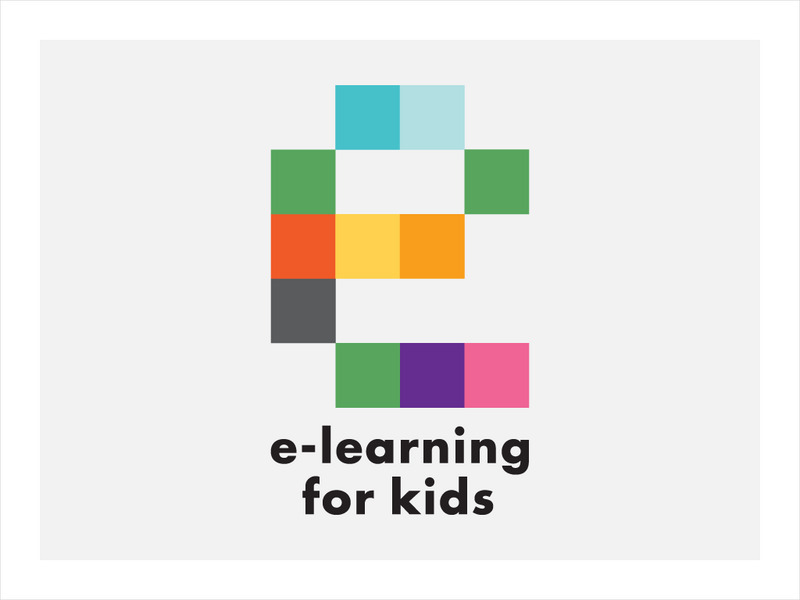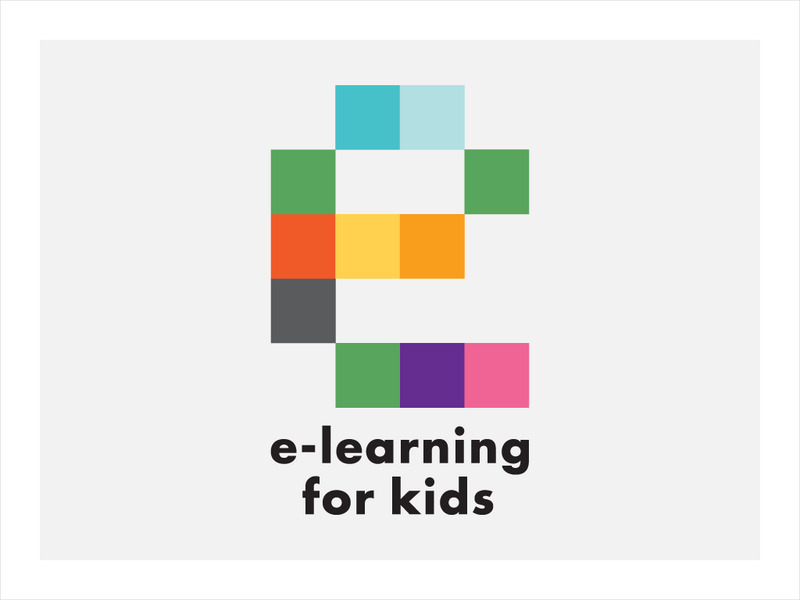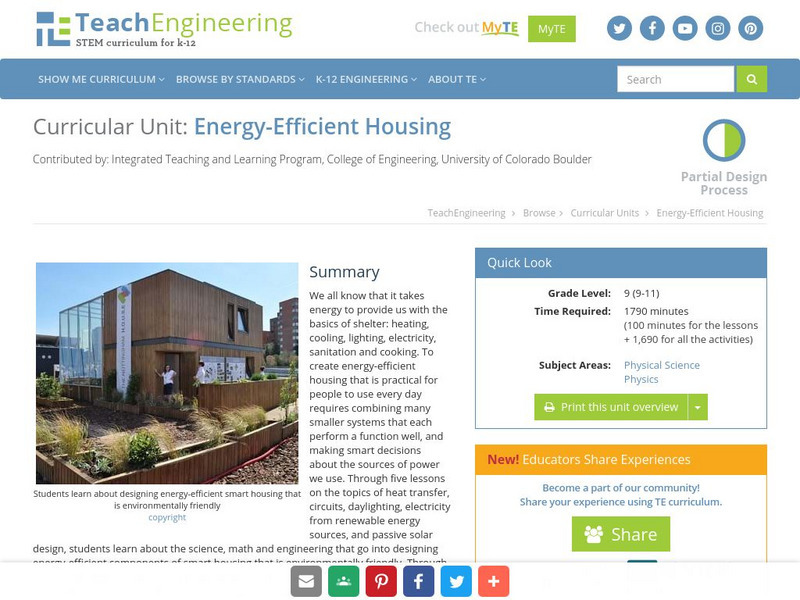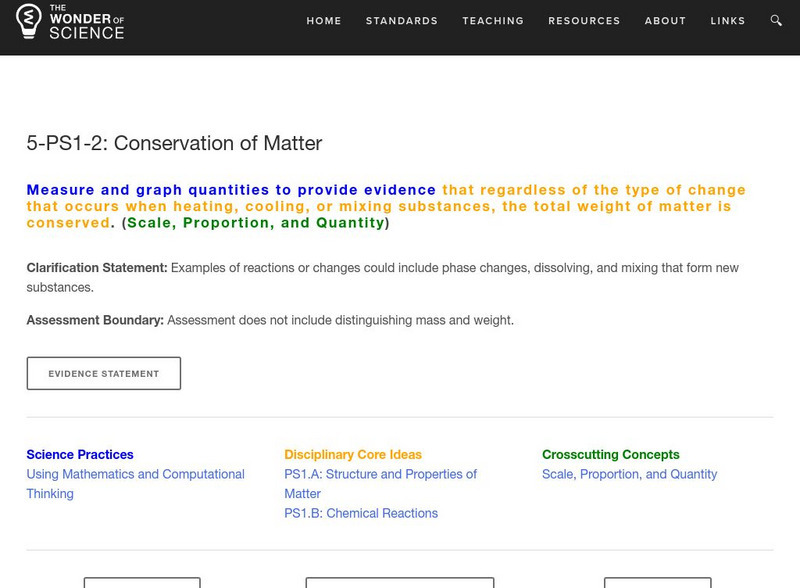Curated OER
Phases
In this phases worksheet, students rank the chemical compounds by decreasing vapor pressure. Students use a phase diagram to determine if water undergoes any phase transitions during the four steps described. This worksheet has 8...
Curated OER
Bicycle Pump Pressure
Students explain that air pressure applies a force. If any of students have flown in an airplane, they have felt the "popping" of their ears caused by the change in atmospheric pressure because of the altitude changes.
Curated OER
Watt's Up with the Electricity Bill?
Students study of how much electricity is used in their home and the actual cost for the electricity. They create a realistic conservation plan for their home focusing on the areas that tend to use a great deal of electricity....
Curated OER
Transformation of E. coli with Antibiotic Resistance
Students participate in an experiment in which they transform an E. coli cell. They discover how the genetic make-up of the cell can be changed by added foreign DNA. They answer questions to complete the lab.
Curated OER
Liquid Crystal IR Detector
Middle schoolers experiment with one method of detecting infrared radiation. They simulate the detection of infrared radiation using a liquid crystal sheet.
Curated OER
Environment
Learners examine the energy saving benefits of trees. They identify ways in which trees reduce air pollution. They also work together to solve problems related to pollution.
Curated OER
Coal Ash Analysis
Students use ash contnet, one of the important environmental concerns, that can be determined by massing the residue remaining after buring a sample of coal under controlled conditions. They complete a lab making ash content. Students...
Curated OER
Here Comes the Rain
Second graders help to prepare a model of the water cycle before the conduction of this experiment. They use the model in order to observe changes that happen to water when it changes states of matter.
Curated OER
The Water Cycle
In this worksheet on the water cycle, students read a short passage about the water cycle, located beneath a graphic organizer showing the cycle in pictures with labels.
Curated OER
Mixed Prepositions 12-ESL
In this preposition worksheet, students complete a given text, choosing the correct prepositions. Students click on a "check answers" button for immediate feedback.
Curated OER
Colored Clouds
Fourth graders, in groups, examine how particles in warm water move faster than particles in cold water.
Science Buddies
Science Buddies: Just Keep Cool How Evaporation Affects Heating and Cooling
When we get hot, we sweat. The physiological role of sweat is to cool us down. When the water evaporates, it removes energy from our bodies. This sort of evaporative cooling can also be used to cool homes, using what are referred to as...
E-learning for Kids
E Learning for Kids: Greenland: How Can Heat and Cooling Change Materials?
Nanook wants to learn to cook. In order to cook, she first needs to learn how things can change when they are heated or cooled.
Exploratorium
Exploratorium: Science Snacks: Cool Hot Rod
This activity will show students how objects change size when heated and cooled. Students will observe a metal tube have expansion and contraction.
Science Buddies
Science Buddies: Rubber Band Elasticity and Temperature
Many materials expand when heated and contract when cooled. What do you think will happen to the elasticity (stretchiness) of a rubber band when it is heated or cooled to various temperatures?
ArtsNow
Arts Now Learning: Cool / Warm Name Design Rubbings [Pdf]
In this lesson, 3rd graders reflect on who they are by listing their likes and dislikes, beliefs, hobbies, etc. They then create a rubbing of their name and add rubbings of objects they like, along with symbols and sketches. Next, they...
Science Buddies
Science Buddies: What's the Fastest Way to Cool a Soda?
When you are craving an ice cold drink of soda, the last thing you want is to be stuck with a bunch of soda cans at room temperature. This fun science experiment sends you on a discovery to find the fastest way to cool soda with...
E-learning for Kids
E Learning for Kids: Science: Loch Ness: What Happens When Solids and Liquids Are Heated or Cooled?
Students will look at what happens to different types of matter when they have a change of state.
PBS
Pbs Learning Media: The Ruff Ruffman Show: Teacher's Guide: Kitchen Chemistry
Learn about kitchen chemistry alongside Ruff Ruffman. Students can use the videos, games, and activities from The Ruff Ruffman Show to discover how by investigating solids and liquids and exploring heating and cooling, science can help...
Khan Academy
Khan Academy: Biology: Specific Heat, Heat of Vaporization, and Density of Water
Why does ice float? In this article answer that question by learning about the topics of Specific heat capacity, evaporative cooling, and heat of vaporization of water.
Science Struck
Science Struck: Conduction, Convection, and Radiation
Explains the concept of heat transfer and describes conduction, convection, and radiation which are the three modes of heat transfer. Includes formulas, examples, and applications.
CK-12 Foundation
Ck 12: Fifth Grade Science: Physical Science: Chemical Properties of Matter
A module that provides the definition of chemical property and examples of the chemical properties of matter using explanations, pictures, and review questions.
TeachEngineering
Teach Engineering: Energy Efficient Housing
We all know that it takes energy to provide us with the basics of shelter: heating, cooling, lighting, electricity, sanitation and cooking. To create energy-efficient housing that is practical for people to use every day requires...
The Wonder of Science
The Wonder of Science: 5 Ps1 2: Conservation of Matter
On this site, find a variety of materials to help students understand the conservation of matter. Create lessons that allow students to measure and graph quantities that could show even if matter is heated, cooled or combined with other...















![Arts Now Learning: Cool / Warm Name Design Rubbings [Pdf] Lesson Plan Arts Now Learning: Cool / Warm Name Design Rubbings [Pdf] Lesson Plan](https://static.lp.lexp.cloud/images/attachment_defaults/resource/large/FPO-knovation.png)




